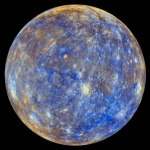
If there’s one thing that everyone has in common, it’s the unavoidable occurrence of death. We can take steps to prevent it but eventually we all have to take our last breath. The body is remarkable during life but you may not realize just how many amazing things it continues to do even after our hearts stop beating. Take a look at these rigor mortis facts to learn how the body changes after death.
Rigor Mortis Facts Infographics
Rigor Mortis Definition
Once a person has passed on, the muscles in their body instantly become soft and flaccid. The body then begins to go through the stages of death, with the third stage being rigor mortis. In this state, the muscles become firm and rigid. It begins in the smallest muscles, like those found in the face, hands and feet, and then continues to the larger limb muscles. If the muscles are stretched for whatever reason, their stiffness is “broken” and the body will move on to the next stages.
Causes of Rigor Mortis
Chemical Changes
Rigor mortis occurs because of a chemical change in muscles after death. When a person is alive, their muscles contract to complete physical actions, like walking and talking. These contractions are the result of an exchange of chemicals. When resting, muscles pump out calcium ions. These ions interact with actin and myosin filaments which results in a muscle contraction. The muscle stays contracted until adenosine triphosphate binds to the myosin and relaxation occurs.
All of this happens because of oxygen. So when the body is no longer receiving oxygen, the chemical reactions and exchanges don’t occur. Respiration can continue anaerobically immediately following death briefly but without a continued source of oxygen, muscles cannot produce adenosine triphosphate. The myosin and actin filaments remain contracted and the muscles remain tense.





